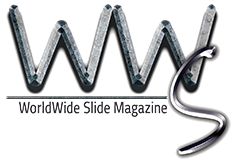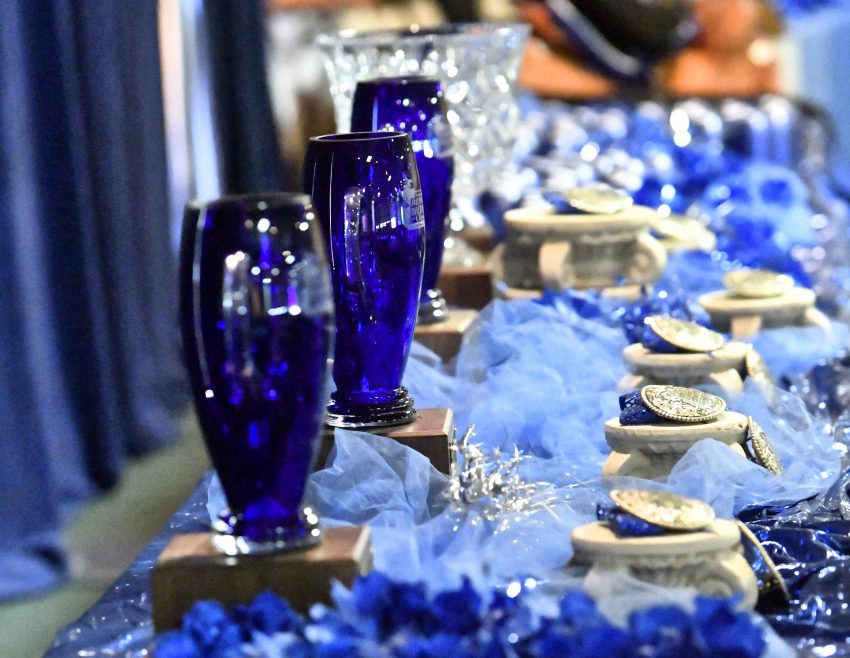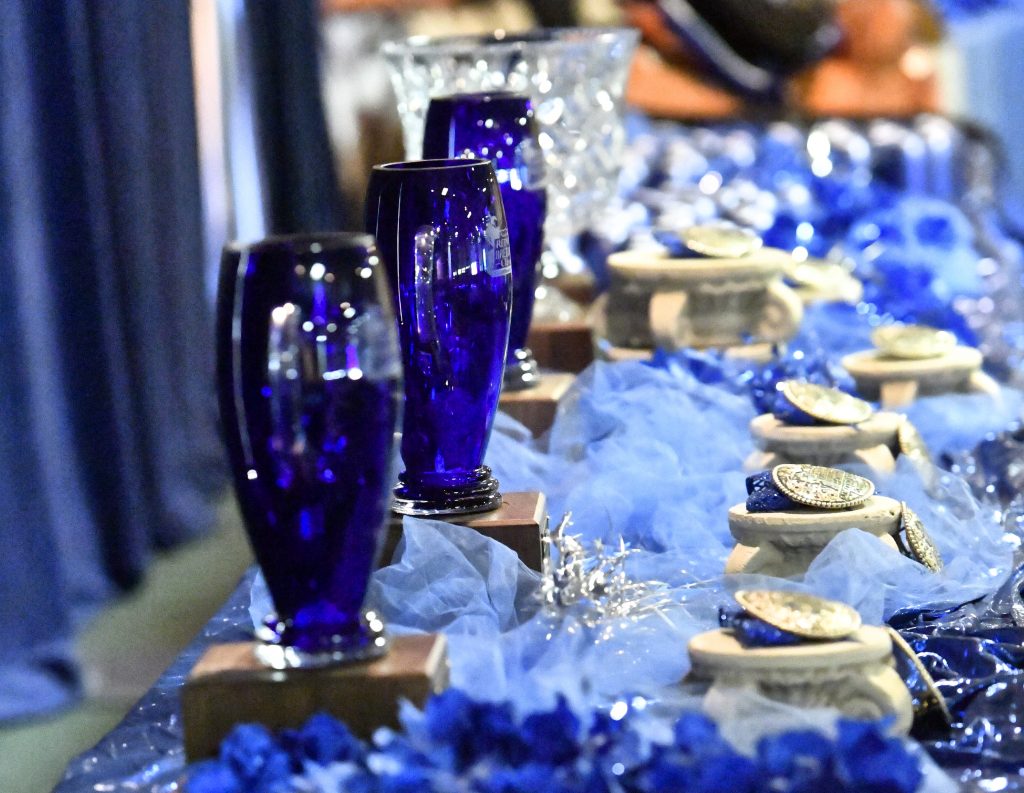
The NRBC was born in the fall of 1997 when an elite group of reiners – Tom McCutcheon, Tim McQuay, Colleen McQuay, Pete Kyle, Dick Pieper, Carol Rose, Gary Putman, and Robert Chown – got together and created the National Reining Breeders Cup, now known as the National Reining Breeders Classic. Other early members of the team were Mike Christian and Cheryl Magoteaux- Cody.
The program and show were created with two purposes in mind; the first was to satisfy the demand for an economically important event for horses after their futurity year, and the second was to make the program easy to both understand and implement.
The NRBC’s format was simple and straightforward, having been modeled after a similar cutting program. Once stallions were enrolled for an annual fee, their get could be enrolled. Enrollment made those foals eligible to compete as 4 and 5-year-olds at the NRBC, which was held with the Ride of Life Reining at the Lazy E Arena. The NRBC
Board felt that the solid foundation of the annual Lazy E – Ride of Life Reining, as well as the size of the facilities, the prestige of the Lazy E, and its central location all combined to make it an ideal showcase for the new program. From almost day one, the innovative program was a success.
Response to the program was overwhelming from the beginning, and the list of subscribed stallions read like a “Who’s Who” in the reining industry. NRBC President Tom McCutcheon recalled, “By October of 1997, before the appearance of a single advertisement, word of mouth had resulted in paid enrollment of 60 stallions.”
Within six months, more than 140 stallions were enrolled and the success of the stallion program was assured. By 2000, that number had risen to more than 220. By midyear 1998, people were already calling the NRBC Office for lists of enrolled foals so they could actively seek prospects to buy that are were eligible for the event.
Early on, the program’s growth was phenomenal, and the Board placed it under the direction of Pro Management, Inc., as the century turned. The Byars, Oklahoma-based company has hosted and managed the event ever since.
While the money is impressive, the appeal of the NRBC can’t be explained by dollar signs alone. The show is like no other, with amenities designed by the organizers to make showing a fun experience. Special activities and touches set the show apart, and the NRBC has always boasted an atmosphere of fun.
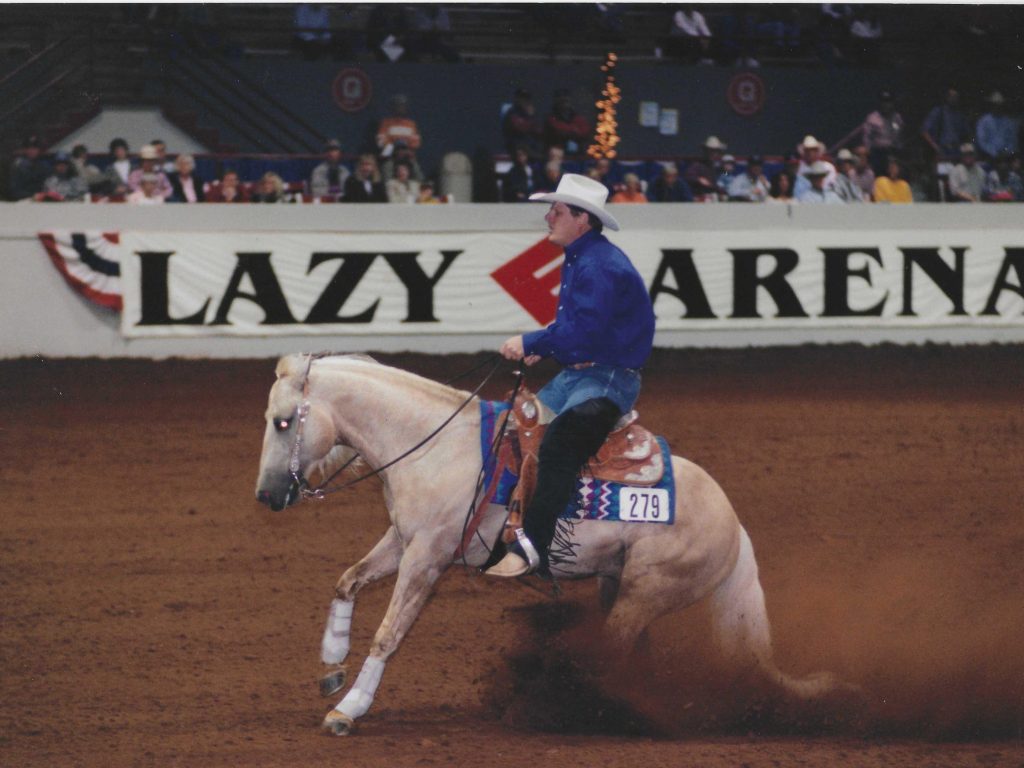
The NRBC Through the Years
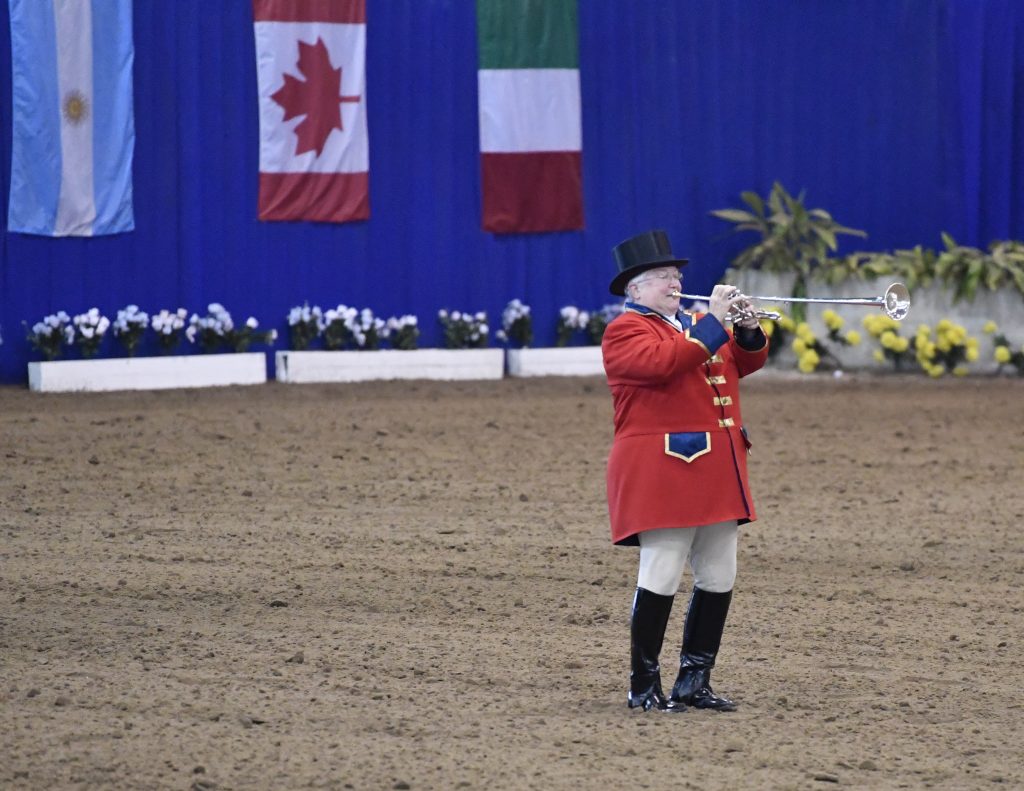
The first NRBC, in April of 1998 in Guthrie, Oklahoma, paid over $210,000 and featured a $10,000-added Open NRHA Reining– the largest National Reining Horse Association- approved Open Reining at that time, as well as a $5,000-added Youth Reining.
The first NRBC Open Classic featured nearly 70 entries and the Non Pro just short of 50. The ambiance of the show helped to mold its eventual identity, with a mariachi band for entertainment, and a live trumpeter to perform the call to the post. In fact, trumpeter Vicki Friedman performed the call to the post at every NRBC until she retired in 2018. And in a forecast of things to come, as far as trying innovative moves, the NRBC hosted the first Prime Time division.
Later in 1998, the organization’s name was changed to National Reining Breeders Classic to reflect the growing prominence and importance of the event. The NRBC set out to provide a place to show 4-and 5-year-old (and later, 6- then 7-year-old) reining horses for lucrative purses that pay deep into the placings. The NRBC has done just that and more.
In 1999, it paid $345,000 and featured over $200,000 in added money. Also in 1999, the NRBC was chosen as a qualifying show for the first-ever Cosequin $100,000-added United States Equestrian Team Reining presented by Bayer, held in Gladstone, New Jersey, in June.
Both the added money and the designation as a USET qualifier held constant in 2000 when the event returned to the Lazy E Arena, with a total payout of $346,494. The innovative event also held the first-ever
Prime Time Non Pro class, for the more seasoned competitors, and the first NRBC Media Award recipients, Barb and Dick Waltenberry, were recognized. Renowned Christian music artist Susie Luchsinger was on-hand to present the National anthem and lead Sunday worship.
The show moved to Katy, Texas, in 2001. It was the first year of maturity for enrolled foals, and the added purse soared to more than $450,000, with a guaranteed $50,000 slated for the Open Champion. Plus, the
NRBC payout zoomed past the half-million dollar mark to exceed $646,000! A Lee Greenwood concert was held during the event, and reiners also got to show off their golf skills in the inaugural NRBC Golf Tournament.
In 2002, the show payout exceeded $700,000. New for 2002 were the NRBC Double Time awards and the first-ever NRHA Town Talk meeting was held at the event. Country singer Brian Black entertained owners, exhibitors, and fans, and the younger participants were able to hunt Easter Eggs.
In 2003, the total payout was more than $820,000, and the Open Championship check was increased to $60,000. The live entertainment provided by rodeo clown and entertainer Bill McEnany added even more fun to the event.
At the 2004 NRBC, the payout surpassed $900,000 as foal enrollments soared past 2,000 for the first time. The event also hosted its first $20,000-Added NRHA Open and created the Curtis Burlin Award for youth competitors. The show also set a precedent, where the NRBC Finalists were able to select the judges for the finals. A Reiner Look-A-Like Dummy contest was held, and trainer Carolyn Scott and her dancing dog wowed the crowd.
2005 was the banner year, when the NRBC payout officially passed the $1 million mark. The NRBC was featured for the first time on RFD-TV, and it was the first year that there was a live-feed on the Internet.
Jimmy Pierce sponsored the first-ever Texas Hold ‘Em Poker Tournament, and everyone was able to keep up with the action thanks to the Slide Street Journal, which was available each morning with news from the previous day. The NRBC also hosted its first Collegiate Judging Contest that year.
The payout continued to grow in 2006 and surpassed $1.1 million. Lightening the mood was the Dressed to the Nines game, where competition moved out of the arena and into the show barns. Exhibitors’ stall fronts were judged, with the winners receiving great prizes. The NRBC also introduced the first-ever Rookie Professional class to its ancillary lineup.
The 10th anniversary of the event in 2007 held true to tradition, paying out an impressive $1.2 million, including $75,000 to the Open Champion. “We did not make that change lightly. Our concern was that if we went to an increased amount, we wanted to maintain it in coming years, and we wanted to do this
concurrently with increasing the payoff in the lower placings,” McCutcheon said.
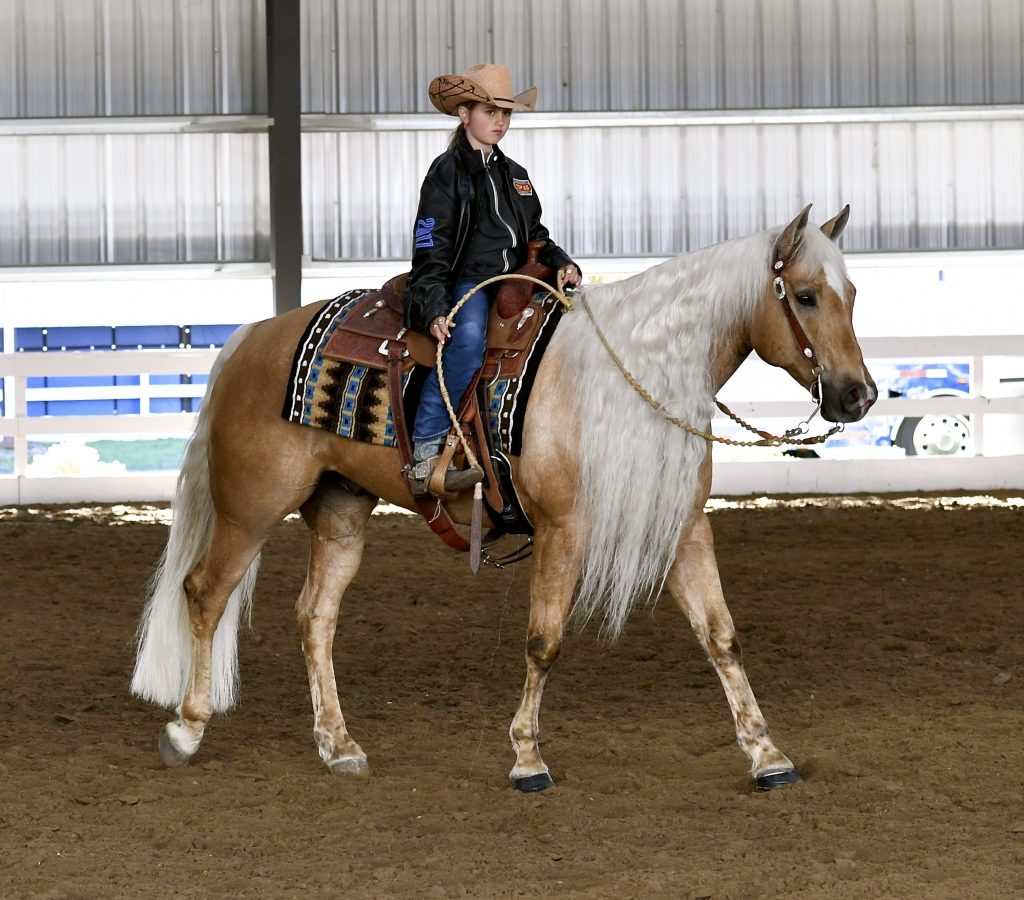
More entries qualified for the finals, and the optional Mare Bonus program paid big! The event was expanded to seven days, and the first Short Stirrup class for 10-year-old and under riders debuted, and it was the first year for NRBC Youth Scholarships. Contestants received even more perks, with the new Drag Awards and the Concert in the Practice Pen, which featured Lyle Lovett, John Hiatt, and Randy Paul. The show was also featured on the award-winning TV show, Wide World of Horses.
In 2008, the NRBC set yet another record, with the unofficial largest Non Pro Limited Age Event in history. The high entry numbers pushed the payout to exceed $1.3 million. Another record was set in 2008, as the stallion program produced its first-ever NRBC Million Dollar Sire. Topsail Whiz was recognized for producing foals that won over $1 million at the NRBC alone! NRHA Ancillary class participants had even more to compete for, as the NRBC began to award Gist Silversmiths buckles to the champions. The NRBC showed its support for the fight against cancer in 2008, hosting a “Pink Day” for Rein In Cancer.
In 2009, that support continued with the “Strut Your Mutt” contest, which raised thousands of dollars for Rein In Cancer. With the addition of three more divisions – the Open Prime Time, Level 1 Open, and Level 1 Non Pro – the 2009 event awarded over $1.25 million, and the NRBC’s total payout since the inaugural event in 1998 surpassed $10 million!
In 2010, the NRBC created the Spring Games to support Rein In Cancer. Exhibitors competed in a variety of contests, including a spur race. The big news though had to do with the already monstrous payout, which soared higher, and exceeded $1.4 million!
The NRBC introduced the new Classic Challenge classes in 2011, giving horses seven years of age and older a continued chance at big money. The new classes again put the total payout just a few thousand
short of $1.4 million. The economic downturn a few years earlier meant fewer foals were enrolled in the
NRBC, resulting in a payout slightly over $1.35 million in 2012.
The Great Southwest Equestrian Center received a facelift prior to the 2013 event with the new Tellepsen Arena, while the East Arena was renamed the Wheless Arena. With more room and time for competition, the NRBC welcomed USA Reining to its lineup. Also new to the NRBC was Reiners U, offering free clinics
to new reiners, as well as Green Reiner classes for the newest competitors. The total money at the event exceeded $1.2 million.
Rein In Cancer Ride with a Ribbon debuted at the 2014 NRBC, where riders created cancer awareness by sporting a number of colored ribbons while showing. Many also chose to donate a percentage of their earnings to the charity. The total payout once again neared $1.2 million.
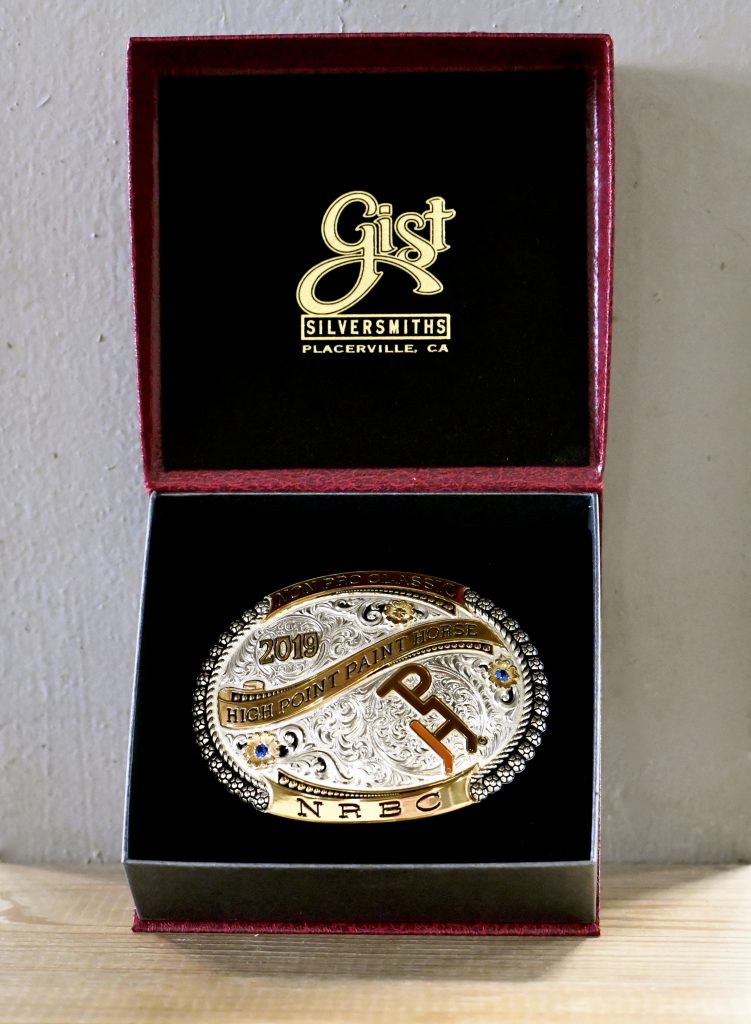
A new partnership with the American Paint Horse Association in 2015 meant that exhibitors competing on registered paint horses had even more opportunities to win. Special Gist Silversmiths buckles were awarded to the highest placing paints in several of the NRBC divisions, as well as a multitude of ancillary classes. In the past, the NRBC has offered kids’ activities for various special occasions and in 2015, created an expanded program dubbed the Reiner Kids Academy. The event paid out $1.1 million in both 2015 and 2016.
2016 saw the creation of a new division for Open Horses – the $10,000 Added Development Division. Eligible horses that had not won more than $2,000 at any reining competition were automatically entered in the division for no additional fee. Markel Insurance continued its support of the NRBC with the creation
of the Non Pro Commitment Award, to be presented annually. And despite a 500-year flood, the show went on!
By 2017, the NRBC had officially enjoyed two decades of success. Along the way, the show grew from a four-day event in one arena to one that has competition spanning seven days with classes going on simultaneously in three separate arenas. There were even more winners, as the top 30 in every Open and Non Pro division advanced to the clean-slate finals. By the time the dust settled in the arena in 2017, this prestigious event had paid out $20 million over the span of 20 years!
Foal enrollments remained strong in 2018 as their total approached 47,000 in the 22 years since the program was born and more than 200 of the most prominent stallions in reining were enrolled on the roster. The total show payout again exceeded $1.1 million.
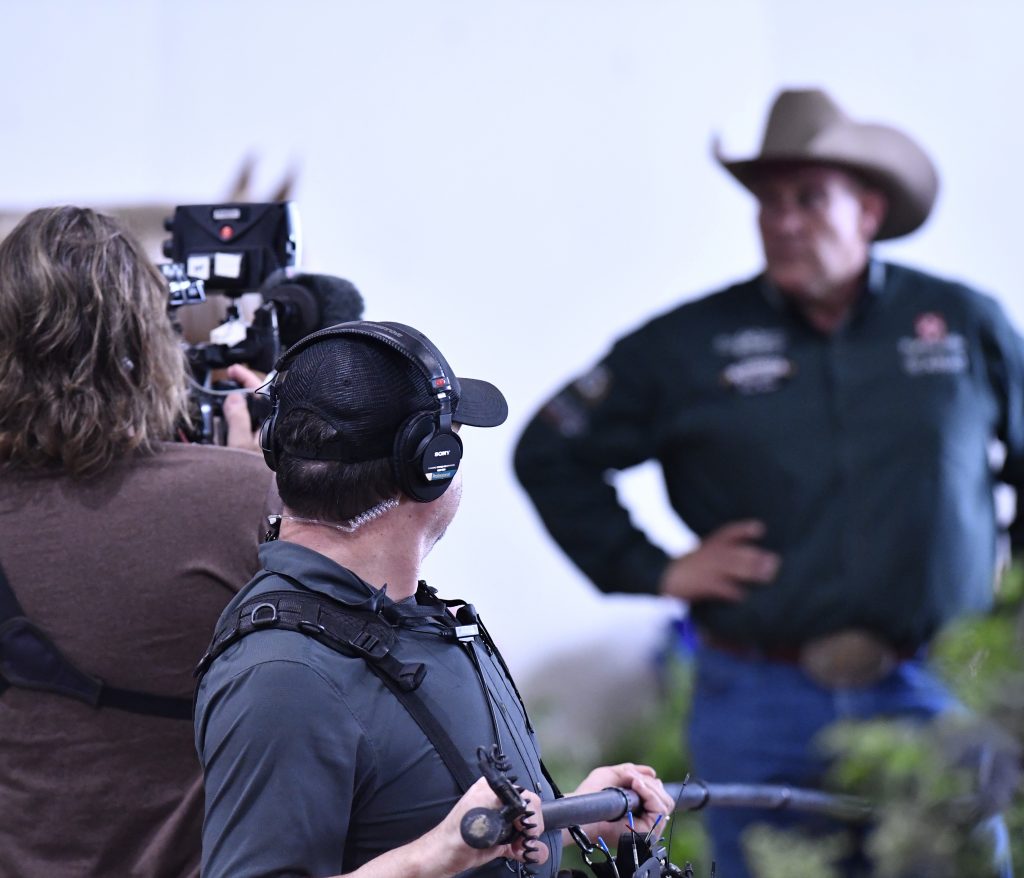
In 2019, the show was quite a production, literally. The scenic venue looked a bit unusual as boom mics hung over the heads of some of the industry’s most prominent riders and swarms of film crews worked tirelessly shooting for the first season of the world’s first reining reality show, The Last Cowboy.
Avid reiner, Taylor Sheridan produced the television show in which twelve riders were invited to compete for a one-million-dollar purse at the new event, The Run For A Million, while their journeys to the competition were chronicled in video and broadcast across the world on the Paramount Network.
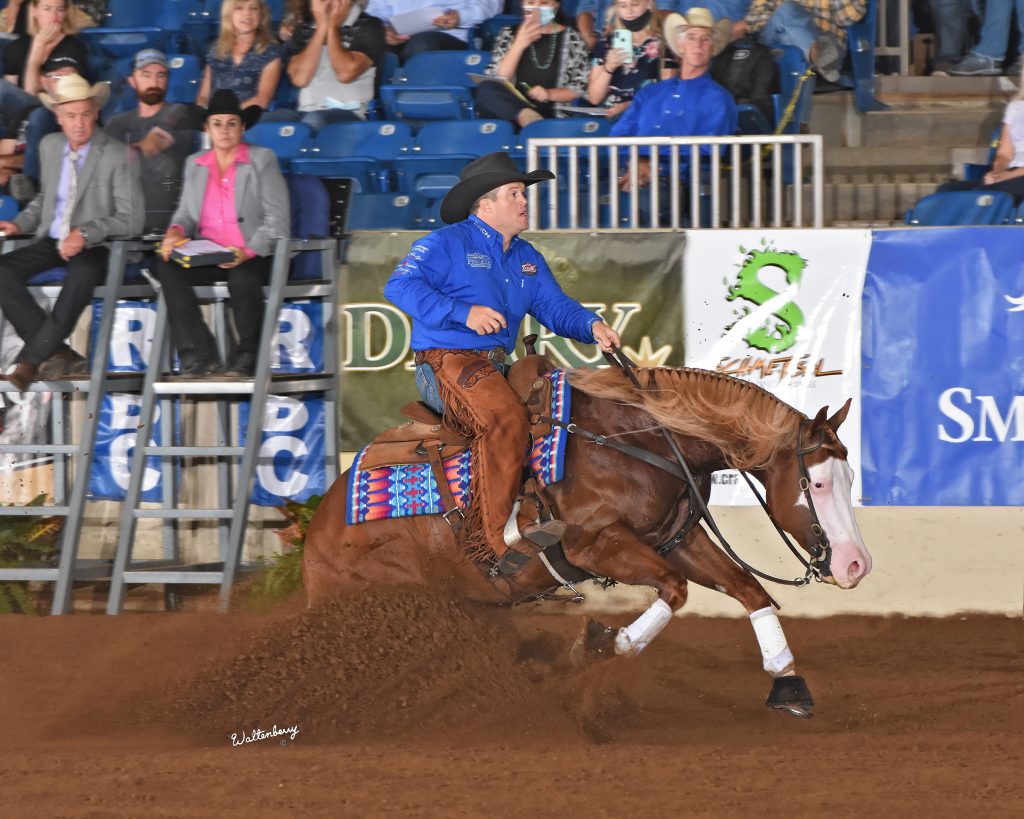
The year 2020 was a show-stopper – in both the best sense and the worst. Amidst the onslaught of the Covid-19 pandemic, the show season was looking bleak with events being canceled worldwide. The NRBC – whose payouts are pivotal for many – hung in the balance and the outlook seemed dismal as the show had already rescheduled once, and conditions surrounding its second attempt weren’t looking good either.
Recognizing its significance to the reining horse industry, the Tulsa Reining Classic gave its dates to the NRBC, and the show made a monumental move to Tulsa Expo Square in August. The NRBC recognized the importance of futurities at that time of the year and adopted the wide range of futurities offered at TRC and agreed to take over as host the South Central Affiliate Regional Championships.
Determined to continue the show season, sponsors threw their full support into the show and reiners came from near and far readily acquiescing to social distancing and mask mandates so that the show could go on. Paying out over $1.4 million, the 2020 show shattered records across the board as the largest reining horse show in history in both payouts and entries; however, for the NRBC, breaking records is a tradition.
In 2021, the NRBC returned to its home in Katy. With the world opening back up, The Run For A Million camera crew traveled to south Texas as well, capturing all the action for the show. Days before the start of the 2022 event, it became clear that NRBC would once again experience a record-breaking year.
